Snow Season in Japan – Hokkaido and the Japanese Alps
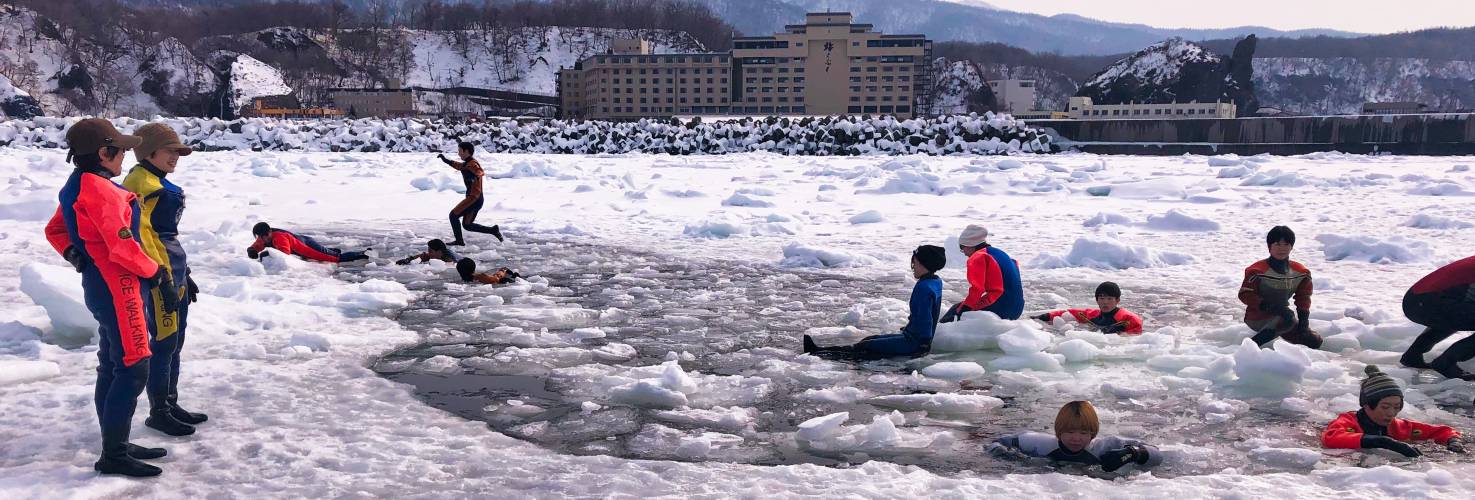
Snow Season in Japan – Hokkaido and the Japanese Alps
Hokkaido
My first day’s trip at Shiretoko National Park was split into three parts: snow shoes walking to see nature in the forest, drift ice walking on the frozen sea of Othosk and animal and coastal views at sunset.
Moved a little south down the eastern side of Hokkaido. Originally I had intended to go to lake Mashū but the road was blocked so I went to Mount Iō instead and then the town of Kawayuonsen which had a nature trail with deer running free (which was quite a surprise as the trail I got first wasn’t on any map).
I visited the Akan Crane Center for day 3. Unfortunately I narrowly missed the bus in the morning and had to wait over 4 hours in Kushiro for the next bus, by which time the cranes were almost all gone, but I could still get the odd decent pic of them. Public transport in Hokkaido is far worse than that in Tokyo and you really need to have things planned out and get up really early at times.
I left the east of the island behind and headed for the heart of Hokkaido. This involved a train across the island which passed through endless fields of snow. Since there was heavy sleet and snow that day, I decided to make it a day. I went to see the zoo in Asahikawa where a range of different species from the world’s coldest climates could be found. In the evening I returned to Furano where I was based and walked along Ningle Terrace which is an arts and craft shopping area made entirely of wooden cabins in a forest illuminated by fairy lights.
The 5th day got off to a rather bad start as the main purpose of my trip to the Shirogane area, near the town of Biei (within an hour of Furano) was to see the blue pond. However, at this time of the year (March) the pond is frozen over and covered with snow, so barely to be seen. I then headed to Shirogane Falls but enroute I found a gap in the snow drift that went into the trees and I found the relatively well concealed Fudou falls, which has a very uncanny resemblance to a stone staircase. Continuing along the road through the whitewashed landscape I reached Shirogane Falls and was pleasantly surprised to find the blue colour of the water was alive and well here after all. The water was so clear you could see the stones of the river bed even from up high on the suspension bridge.
On my 6th day, after a 3 hour bus ride from Furano to Sapporo I felt like the trip to Hokkaido had already ended as it felt like I had returned to Tokyo with a dusting of snow as I had left behind the mountains, ice floes and blue rivers and traded them in for them towers and shopping centres. However, in time I would come to learn that this was in many ways a different place to Tokyo as while it shared many of the conveniences, it did not suffer from the overcrowding the way Tokyo does. In fact I felt like I had a lot of room to roam free, and so I did. I came across many things including the tower, both day and night, an underground shopping centre with exotic birds, the Susukino entertainment district and a giant ferris wheel placed in the center of the main outdoor shopping arcade area.
I didn’t have much energy left on the 7th and final day, in fact I didn’t leave the hotel room until exactly the last possible minute I could to check out. I spent the day going around looking at things within a striking distance of the city centre before getting the flight back to Tokyo from Sapporo late in the afternoon. I came across a fish market, a lacklustre clock tower, a pachinko slot arcade and the main outdoor shopping street/arcade.
Japanese Alps
For the first day on the trip to the Japanese alps I went to Nagano prefecture to see the snow monkeys. There was very little snow left in the middle of March but an abundance of monkeys could still be found. This area is famous for monkeys bathing in the onsen but it was too hot for that (although one did fall in) and they all seemed to gather around the onsen like holidaymakers in Spain gathering around the swimming pool on a sunny day. The thing about the monkey park is although it certainly feels very touristy you still get to have a ‘real’ experience of seeing the monkeys as they act as if nobody’s watching, often passing by humans without stopping to look to go off and see other monkeys.
In the morning of the 2nd day I went on an hour-long ride to the lowest level of the three tiered shrine complex of Togakushi. Togakushi is essentially a group of shrines that are scattered up the mountain at 3 points of different heights. The ascent to the top involves an increase in altitude of over 100 flights of stairs. I may have picked a bad time of year (March) to go as although it was spring at the bottom it was still very much winter at the top and the shrines were buried in snow to the point I nearly missed them entirely. There was also a tree corridor where half of it was missing as only the conifer trees had kept their leaves. The snow and cold climate caused further problems as the route to the mirror pond was blocked off so all things considered you should wait until at least at the end of spring to come.
I returned to Nagano in the afternoon and spent sundown walking around Zenkō-ji. Practically having the temple to myself was a peaceful way to spend sundown on a spring evening. I also liked the atmosphere uphill road leading to the temple, especially at night where it is lit up by street lamps and the mountains cast a strong silhouette in the navy evening sky.
At the halfway point of my trip in the Japanese alps I visited Matsumoto Castle, one of the most famous in Japan. In my opinion, the outside of the castle grounds actually looks better but the inside is still worth visiting at only 700JPY. On the inside you can go inside the castle (which feels more like a matchup between a multi-storey shrine and a museum than a typical castle).
On the fourth day I went for a ride on the Shinhotaka Ropeway (which can be accessed by bus from both Matsumoto and Takayama). The ropeway barely gets a mention from the guidebooks and online travel blogs, making it the most criminally underrated attraction I have seen in Japan so far. The views at the top of the mountain range were amazing. However, when you come in the winter months there is another thing to see, a mini snow corridor as high as you are running through the trees. The only bad things about the trip are that it takes hours to reach by bus and it is one of the more expensive things to do. Nevertheless, it is still the most impressive sight I saw in the Japanese Alps region.
The final part of my trip to the Japanese Alps region was visiting the UNESCO world heritage site of Shirakawa village. I have never been anywhere like it. Even to reach it you have to spend half an hour in darkness going through a mountain tunnel and when you emerge on the other side you arrive at a place composed entirely of thatched roof wooden buildings. When I was walking around the place in the drizzle I couldn’t help but think that it was very much like where I am from in the UK. Both are surrounded by green fields, both are in close proximity to the mountains and the biggest similarity of course being the incessant drizzle that was pouring that day.
Report by our participant Jacob

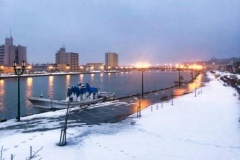
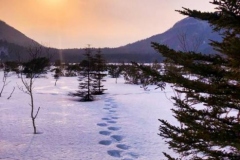
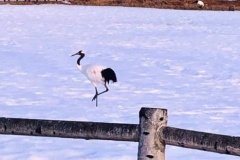

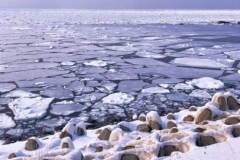
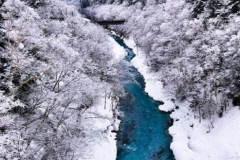
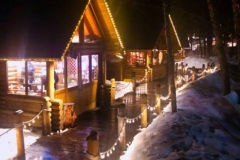
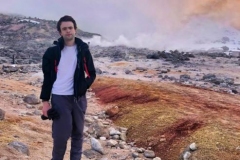
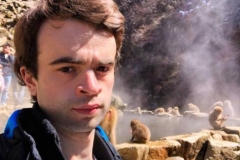
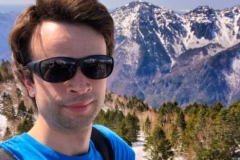
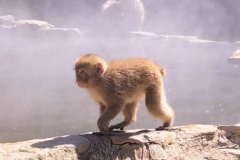
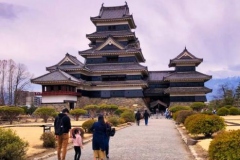
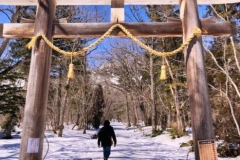
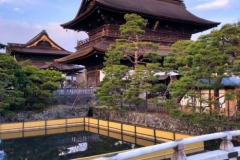
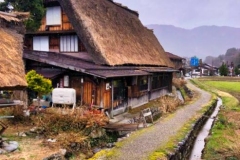





Leave a Reply
You must be logged in to post a comment.